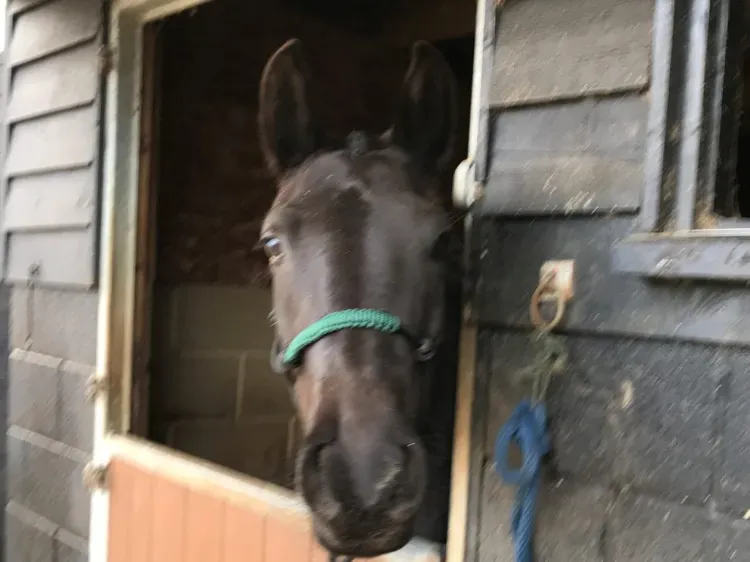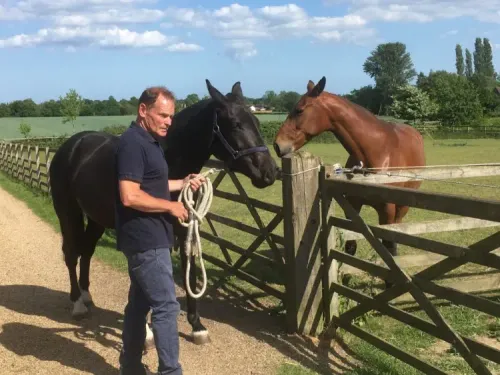
Background information
Fergie at 2 year and 6 months of age had behavioural problems. This article shows how these were addressed.
Fergie settled to her new stable and turn out regime. Incredibly easy to catch Fergie always galloped straight towards me and virtually stopped in my lap. Endearing, but a little disconcerting considering her size.
In the stable Fergie craved attention from humans and generally tried to steal buttons. She loved fuss. Fergie viewed grooming as a reciprocal activity and given the chance always groomed you back, thinking she was in the paddock and this is good protocol.
Everyone loves Fergie
Sure thing, everyone loved Fergie, and she so wanted to please in the stable and was easy to catch and turn out. However, conforming in other situations is something she didn’t do. Fergie was dominant over humans at 2 years and 6 months of age!
Dominant horses are dangerous
Horses must view humans as a lead mare. They must be respectful of humans otherwise things can become dangerous.
The first example of Fergie’s dangerous behaviour and my solution strategies
When Fergie settled in to her new home I decided to lead her around one of the fields in preparation for leading her a little further afield. I used a normal headcollar and a short lead rope thinking that Fergie would behave just like she did being led back and fourth from her grazing field.
Fergie plays up
To start with Fergie led very well from the near and the off sides. She strolled around under control. That is until she no longer wanted to be under control!
Out of the blue and with no identifiable trigger, Fergie put on her parts. She reared bucked and pulled away until I could no longer hold her. She then ran off kicking out in my direction and in complete defiance. However, she could be easily caught after an excited run around.
A change of tactics would be required
I realised that Fergie wound not be quite as straight forward as I had originally thought she would be. A few changes would solve the problem.
I led Fergie back to her stable with no issues. I replaced her headcollar with a thin rope halter with a knot in the centre of the nose section and replaced the short lead rope with a 15 foot lead rope with a knot at the end.
We went back into the field and I walked on her left side. Again she behaved while she wanted to, but then put her parts on. This time I had prepared my self and responded with a few sharp tugs on the lead rope. She felt this more in a 6mm rope halter.
Fergie stopped for a bit before running to the end of the lead rope. Now a 15 foot lead rope gives you more ability to turn a horse and get it moving around you in a circle. It also allows room to more out of any danger from the horses back end. I made Fergie circle around me in a canter while I whirled the end of the rope. I did this until I wanted her to slow and then drove her on again. Fergie needed to realise that I controlled her feet.
I repeated the procedure leading from the other side. Fergie put on her parts and I put on my parts. In total we spent about 30 minutes in the field learning that I controlled the situation and that she would not be able to to run off to her own agenda. For a few days we went through this rigmarole until Fergie nicely accepted being led around a field without arguments and in any direction.
Be the lead mare in a herd
Always get a horse to move their feet while you are as still as possible. This mimics a dominant mare controlling a subordinate member of the herd. Make sure your horse is keeping their eyes on you and travelling in the direction you require for as long as you wish.

Article Suggestion
How to settle a Young Horse into its New Home
